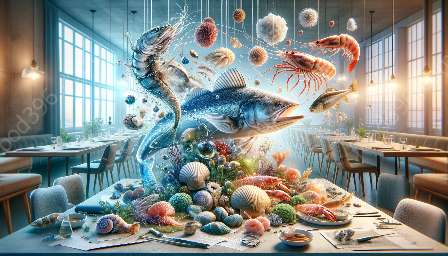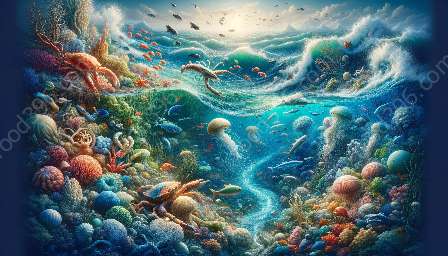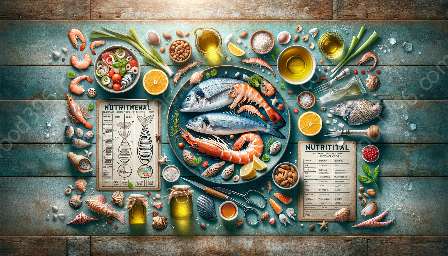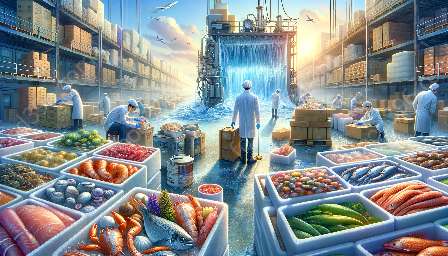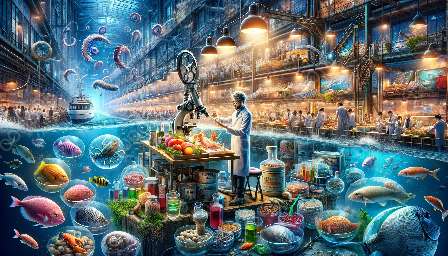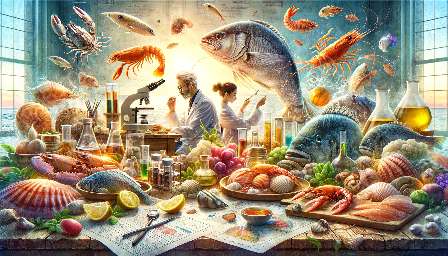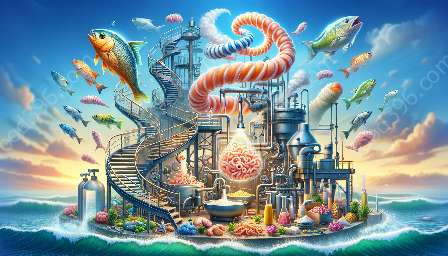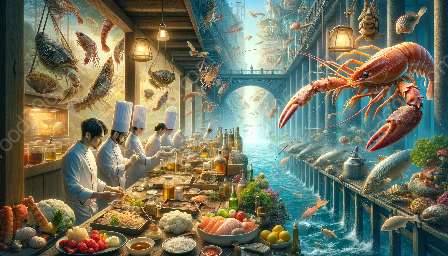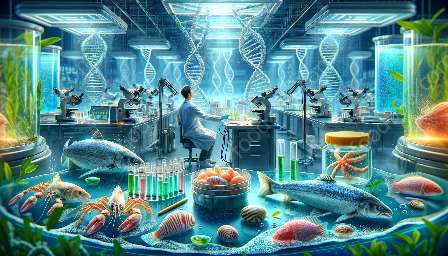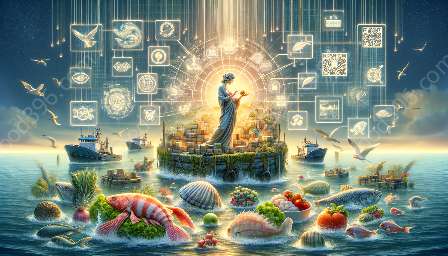Seafood marketing, economics, and science are interconnected disciplines that play vital roles in the food and drink industry. This comprehensive guide delves into the dynamics of seafood marketing and economics, drawing insights from seafood science to provide a holistic understanding of the complexities and opportunities within this realm.
Understanding Seafood Marketing
Marketing seafood involves the promotion and selling of various seafood products to consumers. The industry has witnessed dramatic shifts in consumer preferences and purchasing behavior, prompting innovative marketing strategies to adapt to these changes.
Consumer Preferences and Trends
Consumer preferences have a significant impact on the marketing of seafood. With a growing emphasis on health and sustainability, consumers are increasingly seeking seafood options that are responsibly sourced and environmentally friendly. This has led to the rise of marketing campaigns that highlight sustainable practices, traceability, and ethical sourcing.
Furthermore, the increasing demand for convenience has shaped seafood marketing, leading to the proliferation of ready-to-eat and easy-to-prepare seafood products. Brands are capitalizing on this trend by emphasizing the convenience and time-saving benefits of their offerings.
Brand Positioning and Differentiation
Effective marketing in the seafood industry requires a strong focus on brand positioning and differentiation. Companies need to articulate and showcase their unique value propositions to stand out in a crowded market. This involves leveraging storytelling and authenticity to create emotional connections with consumers.
Utilizing product differentiation strategies, such as emphasizing the taste, quality, and nutritional benefits of seafood products, can further bolster a brand's position in the market. Additionally, building a strong digital presence through social media engagement and e-commerce platforms has become essential for reaching and influencing modern consumers.
The Economics of Seafood
The economic landscape of the seafood industry is multifaceted, encompassing factors such as supply chain dynamics, pricing strategies, and global market trends. Understanding the economic forces at play is crucial for industry stakeholders to make informed decisions and drive sustainable growth.
Supply Chain Dynamics
The seafood supply chain is complex, involving numerous stages from fishing and aquaculture to processing, distribution, and retail. Economic considerations come into play at each stage, influencing sourcing decisions, inventory management, and transportation logistics.
Fluctuations in supply, driven by factors such as weather patterns, geopolitical events, and environmental regulations, can have profound impacts on the economics of seafood. Additionally, the integration of technology and data-driven solutions in supply chain management has contributed to greater efficiency and transparency, optimizing economic outcomes for businesses.
Pricing Strategies and Market Dynamics
Seafood pricing is influenced by a myriad of variables, including seasonality, production costs, currency exchange rates, and consumer demand. Pricing strategies must navigate the delicate balance between profitability and market competitiveness, especially in the face of volatile raw material costs and evolving trade dynamics.
Understanding market dynamics, including the impact of international trade agreements, tariffs, and regulatory policies, is essential in navigating the global economics of seafood. Economists and industry analysts closely track these factors to forecast market trends and assess the implications for businesses operating within the seafood industry.
Intersecting with Seafood Science
Seafood science serves as a critical foundation for understanding the nutritional, safety, and quality aspects of seafood products. By integrating insights from seafood science into marketing and economics, industry stakeholders can make data-driven decisions that prioritize consumer well-being and industry sustainability.
Nutritional Value and Safety Considerations
Nutritional value and safety considerations profoundly influence consumer perceptions and choices in the seafood market. Seafood science provides valuable insights into the composition of various seafood products, highlighting their rich protein content, omega-3 fatty acids, and essential nutrients. Moreover, scientific research and analysis contribute to the development of safety protocols and quality assurance measures, ensuring that seafood products meet stringent standards and regulations.
Sustainability and Environmental Impact
Seafood science intersects with sustainability initiatives, evaluating the environmental impact of fishing and aquaculture practices. By examining factors such as overfishing, habitat destruction, and ecosystem conservation, seafood science informs the development of sustainable seafood management strategies. This awareness of environmental impact extends to marketing efforts, where brands promote their commitment to sustainable sourcing and eco-friendly practices.
Seafood in the Context of Food & Drink
The seafood industry's convergence with the broader food and drink sector presents opportunities for synergy and collaboration. As consumer preferences evolve and culinary trends emerge, seafood's integration within the food and drink landscape reflects a dynamic interplay of flavors, cuisines, and cultural influences.
Culinary Innovation and Fusion
Seafood's versatility and adaptability make it a focal point of culinary innovation. Chefs and food artisans continually explore creative ways to incorporate seafood into diverse dishes, drawing inspiration from global culinary traditions and contemporary flavor profiles. This fusion of culinary styles and techniques contributes to the enrichment of the food and drink experience, enticing consumers with an array of seafood-infused offerings.
Pairing with Beverages
The relationship between seafood and beverages, notably wine, beer, and spirits, underscores the interconnectedness of the food and drink landscape. From seafood and white wine pairings to craft beer and seafood tastings, the dynamic interplay between seafood and beverages reflects the art of gastronomic pairing. Marketing endeavors often emphasize these pairings, leveraging the complementary nature of seafood and beverages to elevate the overall dining and culinary experience.
Final Thoughts
Seafood marketing, economics, and science converge to form a dynamic and multifaceted ecosystem within the food and drink industry. Through an exploration of consumer preferences, economic principles, scientific insights, and culinary integration, the intricate world of seafood emerges as a compelling domain that embraces innovation, sustainability, and sensory delight. By comprehensively understanding seafood's marketing, economic, and scientific dimensions, industry stakeholders are empowered to navigate and thrive within this ever-evolving landscape.
